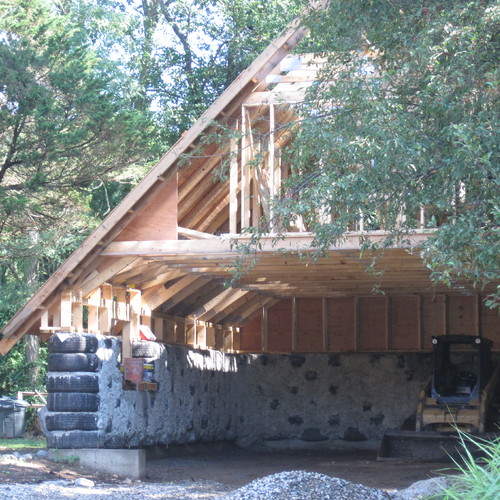
Peggy Deras is a certified kitchen designer and certified interior designer in the San Francisco Bay area who launched her Kitchen-Exchange blog as a companion to her Web site, Kitchen Artworks.
On designing with fluorescent lighting
“Because I try very hard to design fluorescent lighting schemes that bounce the light from hidden coves and the tops of cabinets, I early-on realized that the intensity needed to be higher to achieve the desired results… The great thing about this kind of bounced light is that it picks up the color of the ceiling as it bounces. Consequently we don’t have to deal with yucky fluorescent light color. Of course I do also specify that the fluorescent tubes be the best color my clients can afford, or at least minimum warm white.”
On planning a green remodel
“Green building is really a lot easier than green remodeling because you start with nothing when you build. So building with green materials and methods will result in a green home. How green depends on the materials and methods, but green. When you remodel, you are starting with a structure that is obsolete. And in many cases, the remodel will only target part of the structure — for instance, the kitchen. So, even though you might choose bamboo cabinetry, cork flooring, Energy Star appliances, and all the other accouterments of a truly green kitchen; your green kitchen will still be mired in a not-so-green house.
“What to do? I suggest starting your planning for a remodel, any remodel of your obsolete home, with an Energy Audit and report.”
On the outcome of her own energy audit
“By doing an audit and sealing last year on our home, before buying a new furnace and duct work, we achieved a 48% reduction in our heating energy use. That’s pretty amazing considering that we opted to do only part of the prescriptive measures advised. We were also able to buy a smaller furnace than we had been told by other companies that we needed. Even better is the savings month in and month out in windy, foggy, South San Francisco. Best of all is that we are truly comfortable in our home that was once drafty and cold.”
On shopping for a contractor
“Low-balling contractors often ‘find’ problems that reputable contractors will call out up front. Better to find a contractor you trust and negotiate to bring your project in at a price you can afford. Contractors are not the enemy. They are glad to work with homeowners as a team on the project if given half a chance.”
On when not to hire a designer
“Typically, if I consult with you and then draw up your plans, you will pay me somewhere between $3-5K. On a higher-budget project the client can expect me to save them as much or more than they pay me. When a budget is pared to the bone, as yours is, there is no fat to cut (and no room for a designer on the payroll).”
On when you should hire a designer
“Recognize when you are in over your head: Many kitchens are easy for their owners to plan. Plenty of space for adequate counters, storage, passageways and your chosen appliances. It’s really hard to make a huge mistake going to a Big Box store with your floor plan with a kitchen like that. Other kitchens are not so easy…This is the moment when consumers need to realize that a professional can wring far more out of an inadequate and antiquated space than they themselves or any novice can do.”
Deras also writes two other blogs, Appliance Notes and Kitschy Kitchens. Deras describes the latter as “an entertaining detour into what makes a really BAD kitchen; OR a strange/unusual kitchen.” Both make for good reading.
Weekly Newsletter
Get building science and energy efficiency advice, plus special offers, in your inbox.















0 Comments
Log in or create an account to post a comment.
Sign up Log in